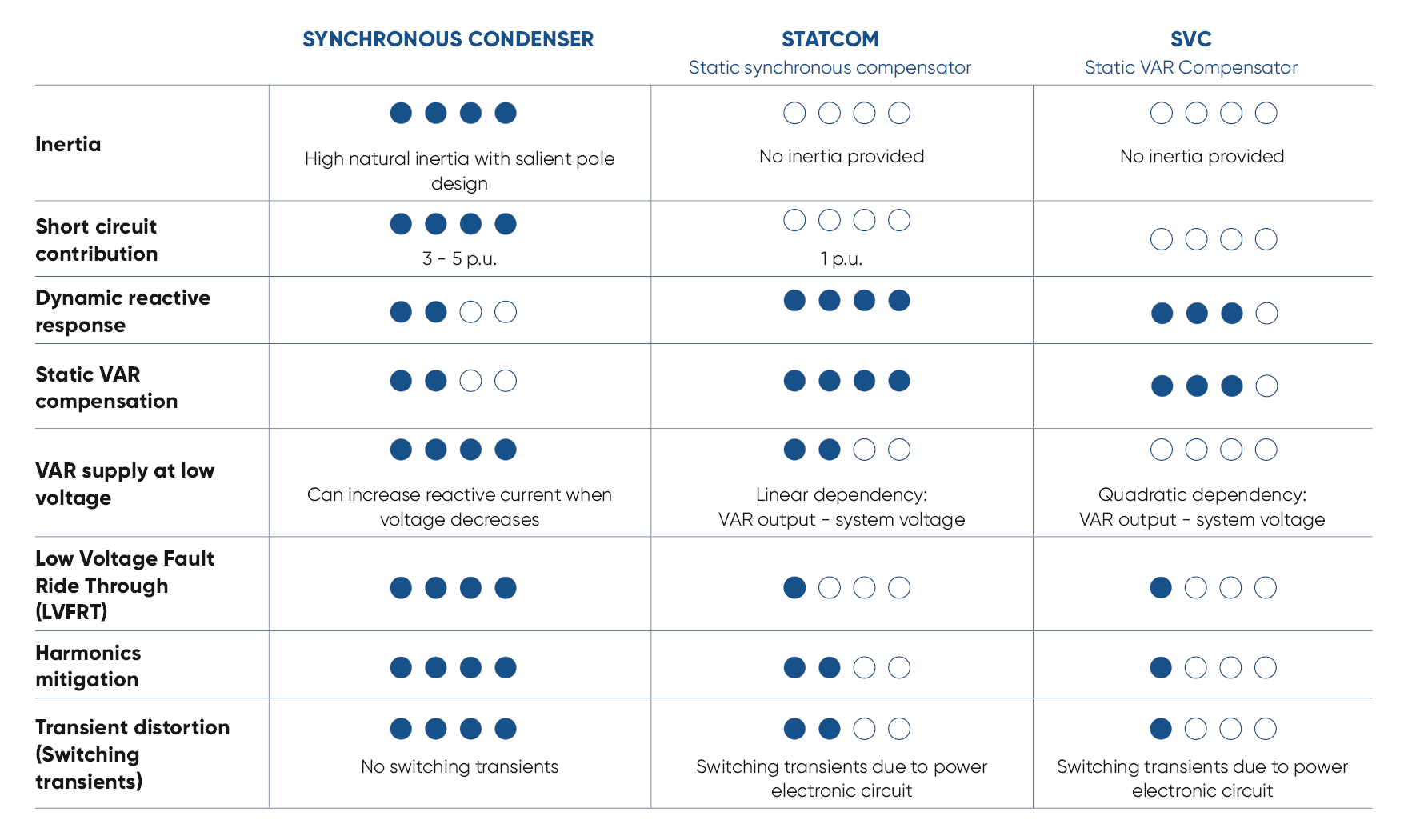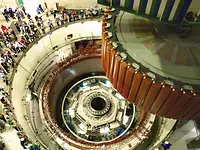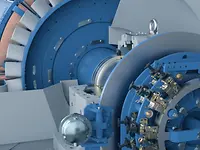Synchronous condensers
So far SVCs (static VAR compensation) and STATCOMs (static synchronous compensator) were the preferred options for power grid compensation solutions. System strength and system inertia were not in focus, as they were available in abundance due to the so far high share of synchronous generators connected to the grid. Due to the increasing share of wind and solar generation, battery energy storage systems and direct current network lines interconnected via inverters (IBRs, inverter-based resources) with transmission and subtransmission systems the situation changed significantly.
High penetration of IBRs results in lower stability of the electric power system, namely reduced frequency stability, reduced voltage stability, reduced rotor angle stability, reduced resonance stability and reduced converter driven stability. SVCs and STATCOMs support only regarding the voltage stability, and not regarding other stability issues. Therefore the long proven, robust and reliable solution of synchronous condenser systems undergo a renaissance after they basically disappeared from the market since the 1980s. One of the first installation for synchronous condensers dates back to 1911, even synchronous condensers became wider spread only starting in the 1950s. SynCons as those systems are also called in short are synchronous machines which’s shaft is not connected to any loads (like in case of a synchronous motor) or any driving force (like in case of synchronous generators). The shaft spins freely, acting like a shock absorber for the electric power system, in maintaining the system frequency and the voltage level.











